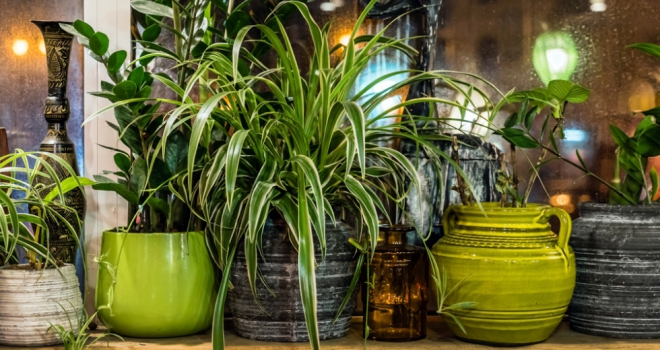
Anyone who knows me will say that I am a plant lover. My house is full of them and I can keep those pots of herbs you get from supermarkets alive for months. And while I certainly don't claim to be Charlie Dimmock for more than a couple of reasons, a bit of common sense means I mostly do alright.
Aside from looking pretty and being one of the things that can make a house a home, numerous scientific studies claim that indoor plants offer two potential benefits for us: improved mental well-being and improved physical health (i.e. they support fitness and general health).
Some of the psychological benefits of house plants include a general uplifting of mood, reduced stress levels and even an increase of pain tolerance.
And some reported physical benefits include a reduction in fatigue, headaches, and blood pressure as well as improved air quality.
So which house plants should you choose and how can you benefit best from them?
Despite an ongoing discussion about the types and numbers of plants needed in your home to gain any health benefits from them, it's fair to say that it's a case of the more the merrier. The more plants you have in your home then the more likely it is that air quality and overall wellbeing will improve.
Top five house plants that are easy to grow:
1: Peace Lily
One of the most common house plants found in the UK. Easy to grow, fantastic at air purification and look good too when in bloom. Make sure you keep the soil moist to avoid drying out and browning leaves. If you can, use filtered, room-temperature water as they can be sensitive to regular tap water. As they are a tropical plant, you should be keeping them in a room that has a temperature of around or above 60f (16c). And remember to keep them away from pets and small children as they contain calcium oxalate which can cause irritation if eaten.
2: Yucca
Another evergreen, the Yucca is a super-low-maintenance plant that will grow (slowly) almost in spite of you. Happy to live in virtually any type of soil (high PH, low PH, sand, clay, whatever!) as long as it drains well. Yuccas tend to thrive best in a partly shaded location that receives bright, indirect light. Due to their desert origins, don't go mad with the water as they prefer to be slightly on the dry side.
3: Cactus
Everyone loves a cactus and with so many different varieties to choose from, you're bound to find one you like. When you think of low maintenance plants, the humble cactus is king. Most people know that overwatering a cactus is a bad idea, but this can lead to under-watering them - the second biggest cactus killer. A good tip is to follow the natural seasonal cycle of the plant - April - September is the dry season, so water less and leave the soil to go dry before you go again. September onwards is its rainy season, so water a little more often and maybe add a little feed. This is just a general tip, so to make sure you're doing the right thing, find out exactly what cactus you have and take it from there.
4: Spider plant
The spider plant (Chlorophytum comosum) can be found in many homes across the UK as it typically easy to care for and will happily grow well in a variety of environments. During the growing months, spider plants require a lot of water, but their consumption will ease in winter. Due to their trailing leaves, they perhaps look best when placed in a hanging basket on a high shelf. They produce babies (known as spiderettes) which dangle from the adult plant and can be easily removed and replanted in a pot filled with any lightweight potting mix.
5: Aloe Vera
The Aloe Vera is a fantastic succulent that is widely known for its health and beauty benefits. They are generally easy to take care of and are perfect (as most succulents are) for those of us who regularly forget to water our little green friends. One of the best things about the Aloe Vera is its anti-inflammatory properties. Breaking open one of its leaves and rubbing directly onto the skin will provide a quick and easy solution to help heal burns, cuts and other irritations. A handy tip is to keep one of the leaves in your freezer during summer so you can treat sunburn with it. Aside from its medicinal qualities, they look fantastic and don't require too much fuss. Watering can be as little as once every two weeks, but if you do over water then simply allow the soil to dry while the plant recovers in a protected place away from direct sunlight.
So there you go. Five plants there that I have been unable to kill – and that your homes can benefit from.





